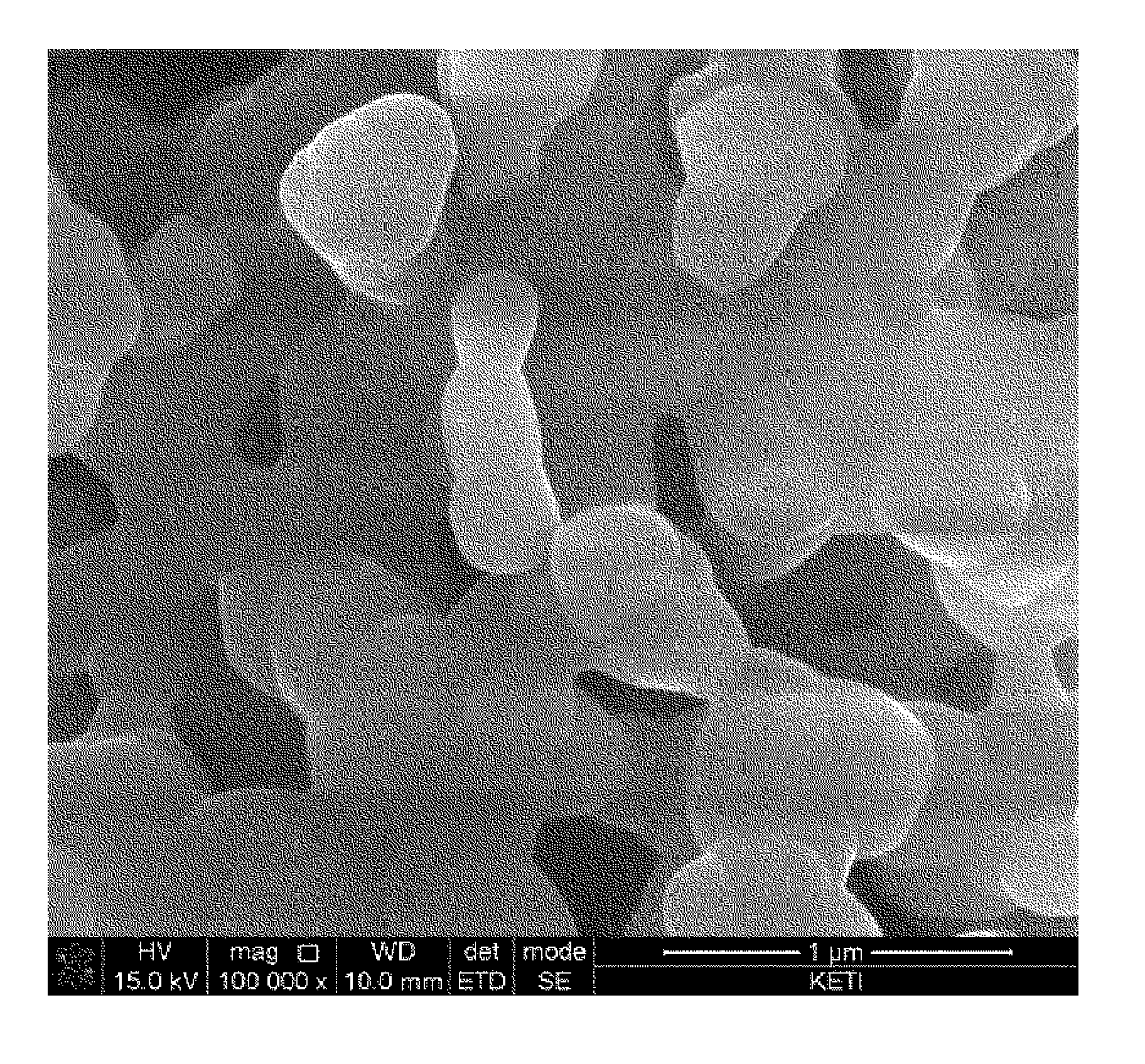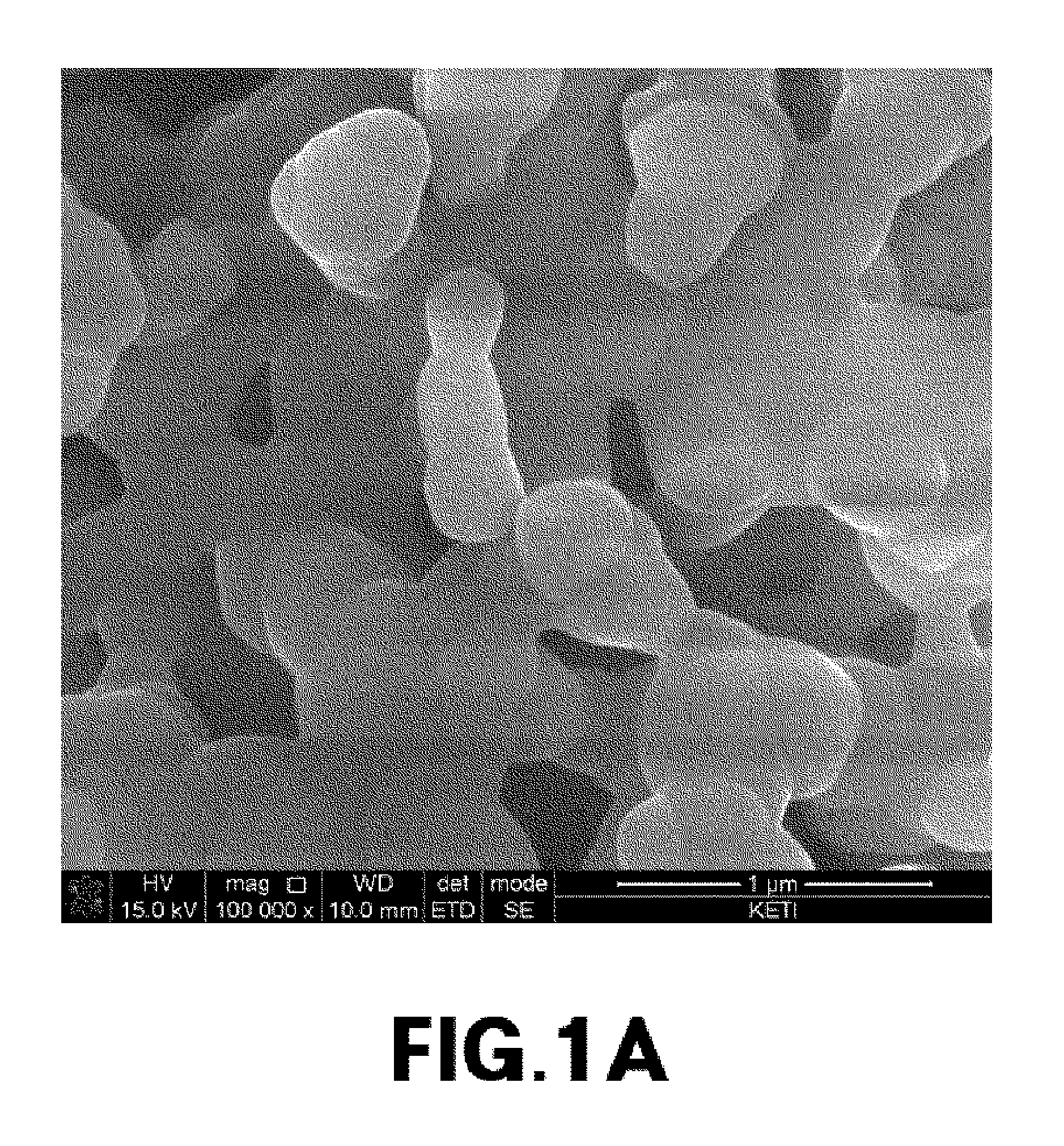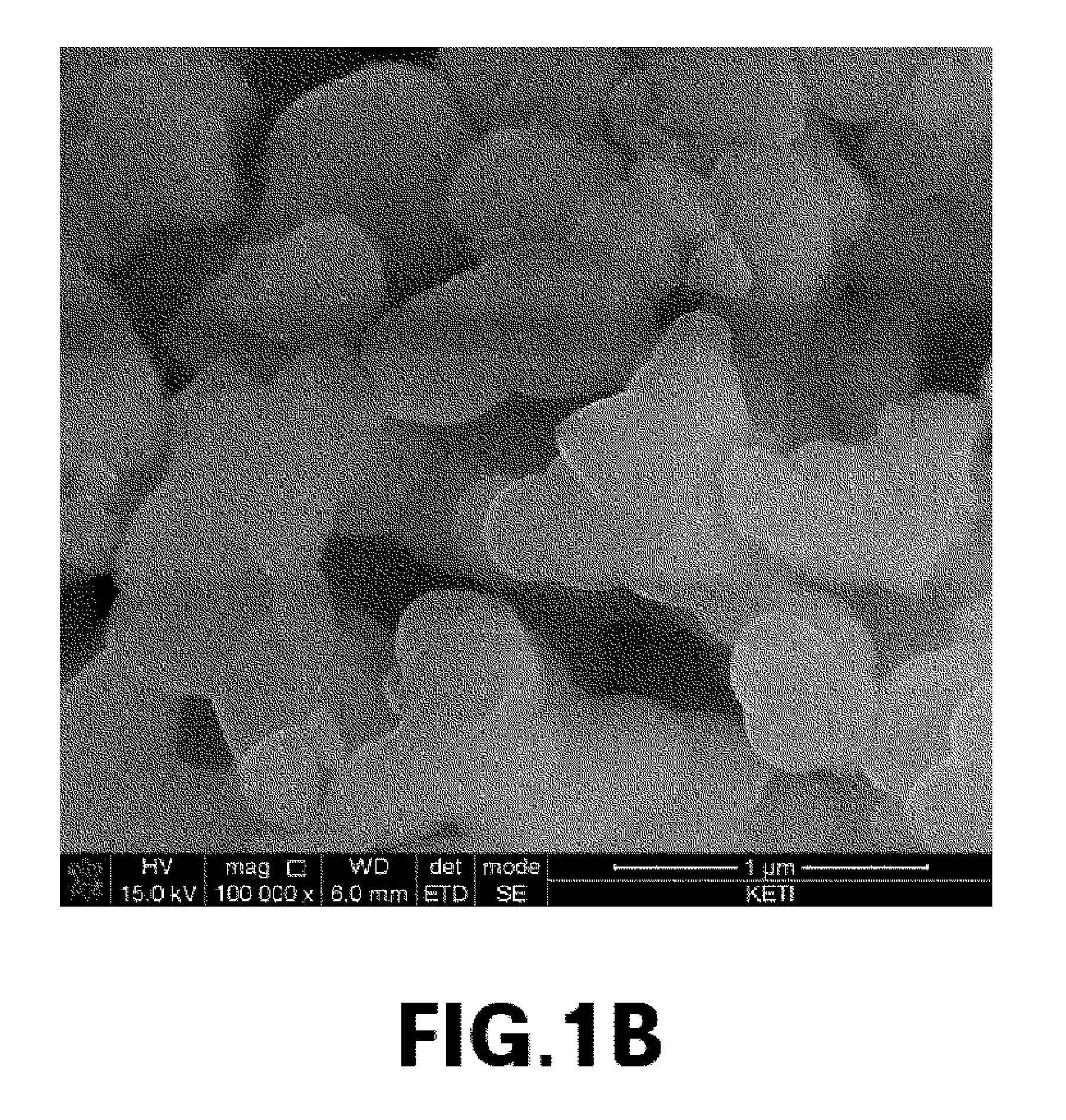Compositions and methods for manufacturing a cathode for lithium secondary battery
- Summary
- Abstract
- Description
- Claims
- Application Information
AI Technical Summary
Benefits of technology
Problems solved by technology
Method used
Image
Examples
example 1
[0063]Sodium carbonate (Na2CO3), manganese oxalate.hydrate (MnC2O4.2H2O), sodium fluoride (NaF), sodium hydrogen carbonate (NaHCO3), and ammonium phosphate (NH4H2PO4) were introduced in predetermined amounts with respect to the total amount of 10 g, and ball milled for 6 hours so as to uniformly the materials.
[0064]The resulting mixture was subjected to pretreatment at 300° C. for 2 hours under an air atmosphere, and fired at 500° C. for 6 hours under an argon gas atmosphere. Then, the resulting Na2MnPO4F was precipitated in acetonitrile including 3 M of LiBr dissolved therein, and reacted together with the flow of argon gas at a reaction temperature of 80° C.
[0065]The test sample, in which ion exchange was completed, was washed with anhydrous ethanol so as to remove the remaining NaBr, and subsequently dried. Then, the resulting test sample was uniformly mixed with Super-P in a ratio of 75:25 by ball-milling and then, prepared as a cathode material composite.
experimental example 1
Test on Performance of an Electrode
[0076]The primary particle size of cathode materials prepared from Experimental Example 1, and Comparative Examples 1 and 2 was measured, and metal composition within the cathode materials was analyzed by ICP emission spectrochemical analysis. The results are noted in Table 1.
TABLE 1Composition analysisLiBrresult (molar ratio)molarityPrimary particle sizeLiNaMnPO4Exp. 13.0M300nm2.001.01.0Comp. Exp. 13.0M2μm02.01.01.0Comp. Exp. 23.0M1μm02.01.01.0Comp. Exp. 33.0M800nm0.21.81.01.0Comp. Exp. 43.0M700nm0.351.651.01.0Comp. Exp. 53.0M500nm0.41.61.01.0
[0077]The cathode material from Example 1, which had a primary particle size of 300 nm, was prepared into Li2MnPO4F by ion exchange between lithium and sodium. It was found that ion exchange did not occur in cathode materials having a primary particle size of 1 um or more (i.e., from Comparative Examples 1 to 3). In cathode materials having a primary particle size of 500 nm to 800 nm (i.e., from Comparative E...
PUM
 Login to View More
Login to View More Abstract
Description
Claims
Application Information
 Login to View More
Login to View More - Generate Ideas
- Intellectual Property
- Life Sciences
- Materials
- Tech Scout
- Unparalleled Data Quality
- Higher Quality Content
- 60% Fewer Hallucinations
Browse by: Latest US Patents, China's latest patents, Technical Efficacy Thesaurus, Application Domain, Technology Topic, Popular Technical Reports.
© 2025 PatSnap. All rights reserved.Legal|Privacy policy|Modern Slavery Act Transparency Statement|Sitemap|About US| Contact US: help@patsnap.com



